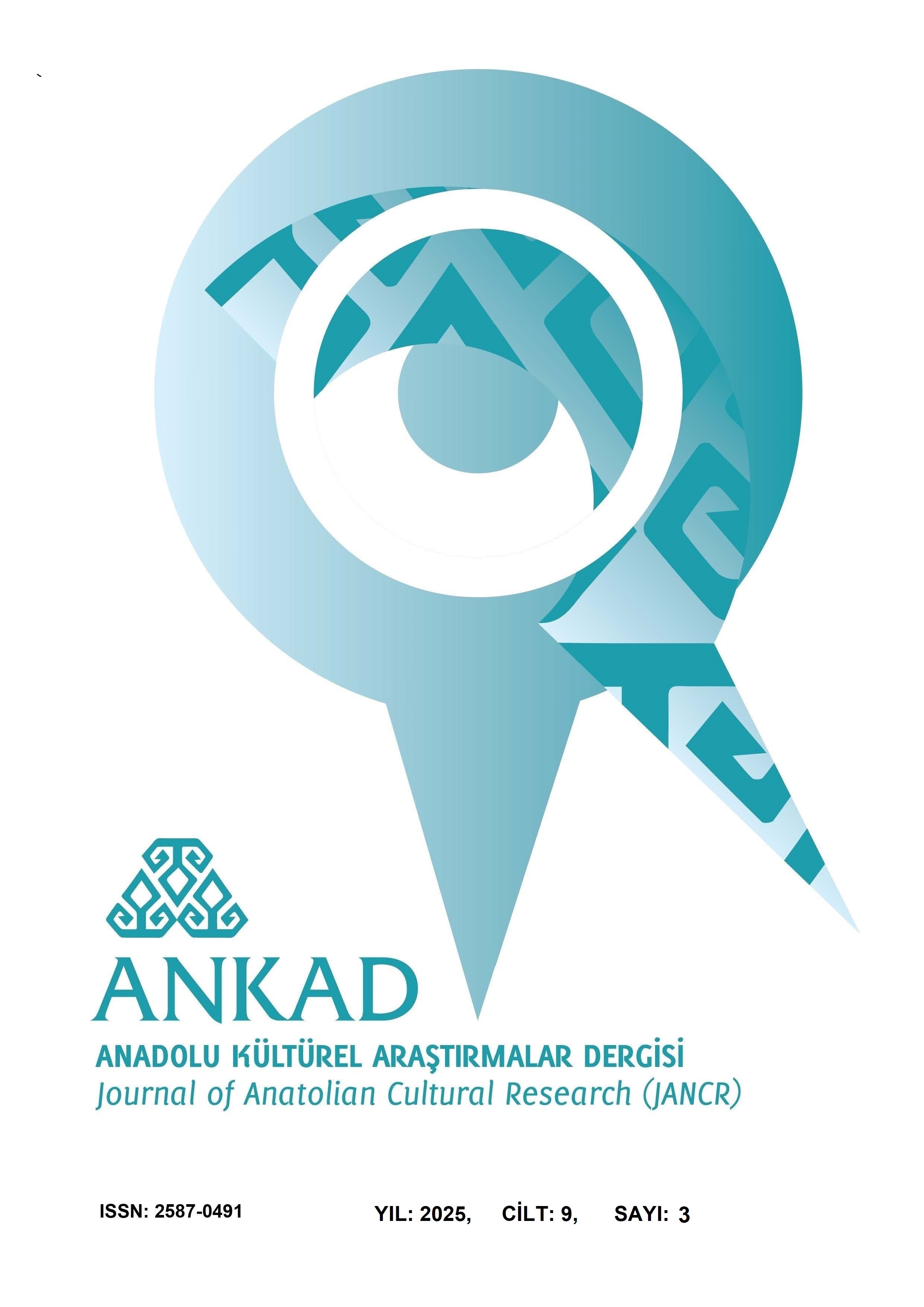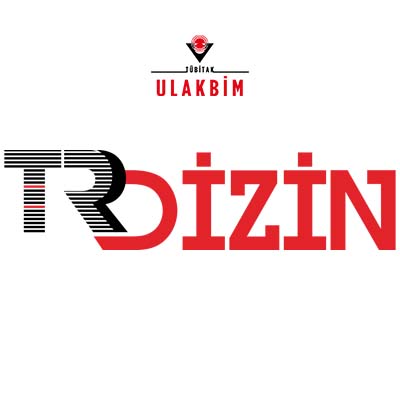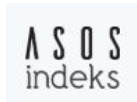A Conceptual Framework and Scale Development Study for Earthquake Literacy
DOI:
https://doi.org/10.63556/ankad.v9i3.289Keywords:
Earthquake Literacy, Scale development, 18-65 age, modern disaster management, disaster educationAbstract
This study involves the conceptual framework of earthquake literacy for adults (18-65 years old), based on disaster education efforts and modern disaster management stages, aiming to develop an earthquake literacy scale. The introduction section addresses assessments of the components and scope of earthquake literacy, drawing from limited studies published specifically on earthquake literacy, defined as having basic knowledge about earthquakes and developing attitudes and behaviors towards earthquakes. For the scale development stage of the research, an item pool of 81 items was created through a literature review. With feedback from five researchers specializing in earthquake education, measurement, and assessment, the number of items was reduced to 61. A pre-test of the scale was conducted with 40 adults not included in the pilot application, resulting in corrections to 4 items. Data for exploratory factor analysis were collected from 764 participants, and 255 university students were reached for confirmatory factor analysis. After analysis, the reliability coefficient for the overall scale was found to be .910. The decision was made that the scale had four factors. The reliability coefficients for the dimensions were as follows: .781 for the "risk reduction" dimension, .714 for the "participation" dimension, .884 for the "responsibility" dimension, and .821 for the "behavior" dimension. As a result of the analyses, a 30-item earthquake literacy scale with a 5-point Likert-type rating was obtained.
References
AFAD (2023). 2022 yılı doğa kaynaklı olay istatistikleri. https://www.afad.gov.tr/kurumlar/afad.gov.tr/e_Kutuphane/Istatistikler/2022-Yili-Doga-Kaynakli-Olay-Istatistikleri.pdf adresinden 23.01.2024 tarihinde erişilmiştir.
AFAD (2024). Deprem istatistikleri, https://deprem.afad.gov.tr/event-statistics adresinden 23.01.2024 tarihinde erişilmiştir.
Arslan, K., Görgülü Arı, A., & Hayır Kanat, M. (2023). Ortaokul öğrencilerine yönelik deprem okuryazarlığı ölçeği geliştirme çalışması. Türk Coğrafya Dergisi, 83, 163-178.
Bal, F., & Akgül, Ö. (2023). Deprem kaygısı ölçeği geliştirme çalışması. The Journal of Academic Social Science, 139(11), 77-96. http://dx.doi.org/10.29228/ASOS.68461,
Barret, P. (2007). Structural equation modelling: Adjudging model fit. Personality and Individual Differences, 42, 815-824.
Becker, J. S., Johnston, D. M., Paton, D., & Ronan, K. R. (2012). A model of household preparedness for earthquakes: How individuals make meaning of earthquake information and how this influences preparedness. Natural Hazards, 64(1), 107-128
Brown, L. M., Haun, J. N., & Peterson, L. (2014). A proposed disaster literacy model. Disaster medicine and public health preparedness, 8(3), 267-275.
Byrne, B. M., Shavelson, R. J., and Muthen, B. (1989). Testing for the equivalence of factor covariance and mean structures: The issue of partial measurement in variance. Psychological Bulletin, 105, 456-466.
Creswell, J.W., & Creswell, J.D. (2021). Araştırma tasarımı: Nitel, nicel ve karma yöntem yaklaşımları (5. baskı) (E. Karadağ, Çev.). Nobel Yayınları.
Chung, S.-C. & Y en, C .-J. (2016). Disaster prevention literacy among school administrators and teachers: A study on the plan for disaster prevention and campus network deployment and experiment in Taiwan. Journal of Life Sciences, 10, 203-214. doi: 10.17265/ 1934-7391/2016.04.006.
CRED. (2018). Economic losses, poverty & dısasters 07.01.2024 tarihinde https://www.cred.be/#pager adresinden erişilmiştir.
CRED (2023). Earthquakes in Türkiye A Review from 1900 to Today, https://files.emdat.be/2023/09/CredCrunch72.pdf
Cvetković, V. M. & Stanišić, J. (2015). Relatıonshıp between demographıc and envıronmental factors and knowledge of secondary school students on natural dısasters. Journal of the Geographical Institute'Jovan Cvijic'SASA, 65(3). 323-340.
Çalışkan, C., & Üner, S. (2021). Disaster literacy and public health: a systematic review and integration of definitions and models. Disaster medicine and public health preparedness, 15(4), 518-527.
Çokluk, Ö., Şekercioğlu, G. ve Büyüköztürk, Ş. (2018). Sosyal bilimler için çok değişkenli istatistik: SPSS ve Lisrel uygulamaları. Ankara: Pegem Akademi.
Demirkaya, H. (2007). İlköğretim 5. 6. ve 7. sınıf öğrencilerinin depreme yönelik tutumlarının çeşitli değişkenlere göre incelenmesi. Türkiye Sosyal Araştırmalar Dergisi, 3, 38- 49.
DeVellis, R. F. (2014). Ölçek geliştirme: kuram ve uygulamalar (Çev. Totan, T.). Ankara: Nobel.
EM-DAT (2024). The İnternational disaster database, https://www.emdat.be/ adresinden 23.01.2024 tarihinde erişilmiştir.
Genç, F.Z., Yıldız, S., Kaya, E. & Bilgili, N. (2022). Disaster literacy levels of individuals aged 18–60 years and factors affecting these levels: A web-based cross-sectional study. International Journal of Disaster Risk Reduction, 76. https://doi.org/10.1016/j.ijdrr.2022.102991
Genç, M., & Sözen, E. (2021). The sustainable scale of earthquake awareness, development, validity and reliability study. International Electronic Journal of Environmental Education, 11(1), 24-41. https://doi.org/10.18497/iejeegreen.794680
Genç, M., & Sözen, E. (2022). Deprem bilgi düzeyi ölçeği: geliştirilmesi, geçerlik ve güvenirlik çalışması. Kırşehir Eğitim Fakültesi Dergisi, 23(3), 2745-2781. https://doi.org/10.29299/kefad.1049922
Güngörmüş, Z., Karacan, E., & Sapçı, E. (2023). Bireylerin depreme ilişkin hazıroluşluk ölçeği: bir ölçek geliştirme çalışması. Paramedik ve Acil Sağlık Hizmetleri Dergisi, 4(1), 1-13. https://doi.org/10.54862/pashid.1232054
Han, J.; Nur, A.S.; Syifa, M.; Ha, M.; Lee, C.-W.; Lee, K.-Y. (2021). Improvement of Earthquake Risk Awareness and Seismic Literacy of Korean Citizens through Earthquake Vulnerability Map from the 2017 Pohang Earthquake, South Korea. Remote Sensing, 13 (1365), 1-25. https://doi.org/10.3390/rs13071365
Harerimana, A., Mtshali, NG. (2020). Using exploratory and confirmatory factor analysis to understand the role of technology in nursing education. Nurse Education Today. 92, 104490.
Jöreskog, K. G. (2004). On chi-squares for the ındependence model and fit measures in Lisrel. Retrieved from https://pdfs.semanticscholar.org/c3f8/6332a70bfa6c3ba735b511d58dd9bf94688d.pdf?_ga=2.27414073.483348357.1564143443-1128486645.1564143443
Kanbara, S., Ozawa, W., Ishimine, Y., Ngatu, N. R., Nakayama, Y., & Nojima, S. (2016). Operational definition of disaster risk-reduction literacy. Health Emergency and Disaster Nursing, 3(1), 1-8.
Karakuş, U. & Önger, S. (2017). 8. sınıf öğrencilerinin doğal afet ve afet eğitimi kavramını anlama düzeyleri. Journal of History Culture and Art Research, 6(6), 482-491. doi:http://dx.doi.org/10.7596/taksad.v6i6.1247.
Karaşin, Y., Filiz, M., & Karagöz, Y. (2023). Depreme yönelik tutum ölçeğinin geliştirilmesi. Afet ve Risk Dergisi, 6(2), 548-561. https://doi.org/10.35341/afet.1250436
Kimura, R., Hayashi, H., Kobayashi, K., Nishino, T., Urabe, K., & Inoue, S. (2017). Development of a “disaster management literacy hub” for collecting, creating, and transmitting disaster management content to increase disaster management literacy. Journal of Disaster Research, 12(1), 42-56.
Kline, R. B. (2011). Principles and practice of structural equation modeling. New York, NY: The Guilford Press.
Maydeu-Olivares, A., and Garcia Forero, C. (2010). Goodness-of-fit testing. International Encyclopedia of Education, 7, 190-196.
Mohadjer, S., Bendick, R., Halvarson, S., Saydullaev, U., Hojiboev, O., Sticker, C. & Adam, Z.R. (2010). Earthquake Emergency Education in Dushanbe, Tajikistan, Journal of Geoscience Education, 58(2), 86-94.
Montz, B. E., Tobin, G. A. ve Hagelman III, R. R. (2017). Natural hazards: explanation and integration. Guilford Publications. 16.11.2024 tarihinde https://books.google.com.tr/books?hl=tr&lr=&id=gw_kDAAAQBAJ&oi=fnd&pg=PP1&dqNatural+Hazards,+Second+Edition:+Explanation+and+Integration+&ots=DJ8lbanfSl&sig=mKmQxaXhLJGDPiEtyhqSLrvLlXI&redir_esc=y#v=onepage&q=Natural%20Hazards%2C%2Second%20Edition%3A%20Explanation%20and%20Integration&f=false adresinden erişilmiştir.
Mulilis, J-P., Duval, T. & Lippa, R. (1990). The Effects of a Large Destructive Local Earthquake on Earthquake Preparedness as Assessed by an Earthquake Preparedness Scale, Natural Hazards, 3, 357-371.
Okita, Y. & Katsube, T. (2016). Coordination of International Urban Search and Rescue (USAR) Teams in the 2015 Nepal Earthquake: “Disaster Literacy” for International USAR, Journal of Japan Association for Earthquake Engineering, 16(7), 24-36.
Oluwafemi, J.O, Ofuyatan, O.M., Sadiq, O.M., Oyebisi, S.O., Abolarin, J.S. & Babaremu, K.O (2018). Review of World Earthquakes. International Journal of Civil Engineering and Technology, 9(9), 440-464.
Özdamar K. (2016). Ölçek ve Test Geliştirme Yapısal Eşitlik Modellemesi. 1. Baskı. Eskişehir: Nisan Kitabevi.
Paton, D., & Johnston, D. (2017). Disaster Resilience: An Integrated Approach. Charles C Thomas Publisher.
Priyowidodo, G. & Luik, J. E. (2013). Communicating disaster mitigation literacy to coastal communities in Pacitan Indonesia (Doctoral dissertation, Petra Christian University). 27.01.2020 tarihinde http://repository.petra.ac.id/16596/ adresinden erişilmiştir.
Rahim, N. B. A. & Wu, B. S . (2015). Disaster prevention literacies: assessing the knowledge, skills and attitude of taiwanese students for an earthquake disaster. 08.01.2020 tarihinde https://www.hsseonline.edu.sg/sites/default/files/uploaded/journal_articles/6Disaster%20educationv1.pdf adresinden erişilmiştir.
Ronan, K. R., & Johnston, D. M. (2001). Correlates of hazard education programs for youth. Risk Analysis, 21(6), 1055-1063.
Shaw, R., Shiwaku, K., & Kobayashi, H. (2004). Linking experience, education, perception and earthquake preparedness. Disaster Prevention and Management: An International Journal, 13(1), 39-49.
Seçer, İ. (2017). SPSS ve LİSREL ile pratik veri analizi (3. Baskı). Anı Yayıncılık.
Seifi, B., Ghanizadeh, G., & Seyedin, H. (2018). Disaster health literacy of middle-aged women. Journal Of Menopausal Medicine, 24(3), 150-154.
Spittal, M.J., Walket, F.H., McClure, J., Siegert, R.J. & Ballantyne, K.E. (2006). The Earthquake Readiness Scale: The Development of a Valid and Reliable Unifactorial Measure, Natural Hazards, 39, 15-29.
Sözcü, U. (2019). Doğal afetler ve doğal afet okuryazarlığı, Ankara: Pegem Akademi.
Sözcü, U. & Aydınözü, D. (2021). Doğal afet okuryazarlığı, içinde K. Karatekin& E.Gençtürk (Ed.) Sosyal Bilgiler İçin Çoklu Okuryazarlıklar II, Ankara: Pegem Akademi.
Sözcü, U. (2021). 'Earthquake Week'Activity Application for High School Students. Eurasian Journal of Educational Research, 92, 275-295.
Sözcü, U. (2022). Afetler ve deprem okuryazarlığı, içinde İ. Dölek (Ed.) Afetlerle Yaşamayı Öğrenmek, Ankara: Pegem Akademi.
Şahin, C. ve Sipahioğlu, Ş. (2002). Doğal afetler ve Türkiye. Ankara: Gündüz Eğitim ve Yayıncılık.
Tabachnick, B. G., and Fidell, L. S. (2007). Using multivariate statistics (5th ed.). Boston, Massachusets, MA: Allyn and Bacon.
Tanhan, F., & Kayri, M. (2013). Deprem sonrası travma düzeyini belirleme ölçeğinin geçerlik ve güvenirlik çalışması. Kuram ve Uygulamada Eğitim Bilimleri, 13(2), 1013-1025. https://tr-scales.arabpsychology.com/wp-content/uploads/pdf/eprem-sonrasi-travma-duzeyini-belirleme-olcegi-toad.pdf
Tavşancıl, E. (2010). Tutumların ölçülmesi ve spss ile veri analizi (4. Baskı). Ankara: Nobel.
TDIB (Türkiye Afet Bilgi Bankası) (2019). 1990-2018 yılları arasında Türkiye’de meydana gelen afetlerin türlerine göre sayısı ve ölenlerin sayısı, https://cevreselgostergeler.csb.gov.tr/turlerine-gore-afetler-i-85851 adresinden 18.01.2024 tarihinde erişilmiştir.
Tekin, Ö. ve Dikmenli, Y. (2021). Sınıf öğretmeni adaylarının afet bilinci algısı ve deprem bilgi düzeylerinin incelenmesi. Ahi Evran Üniversitesi Sosyal Bilimler Enstitüsü Dergisi, 7(1), 258-271.
Tierney, K. (2019). Disasters: A Sociological Approach. Cambridge: Polity Press.
Türker, A., & Sözcü, U. (2021). Examining Natural Disaster Literacy Levels of Pre-Service Geography Teachers. Journal of Pedagogical Research, 5(2), 207-221.
Wang, M., Weı, D. Y., Zhu, X. L., & Yı, N. (2012). An ınvestigation on disaster prevention literacy of secondary school teachers in China. Journal of Educational Studies, 5, 12.
Downloads
Published
How to Cite
Issue
Section
License
Copyright (c) 2025 Journal of Anatolian Cultural Research

This work is licensed under a Creative Commons Attribution-NonCommercial 4.0 International License.










